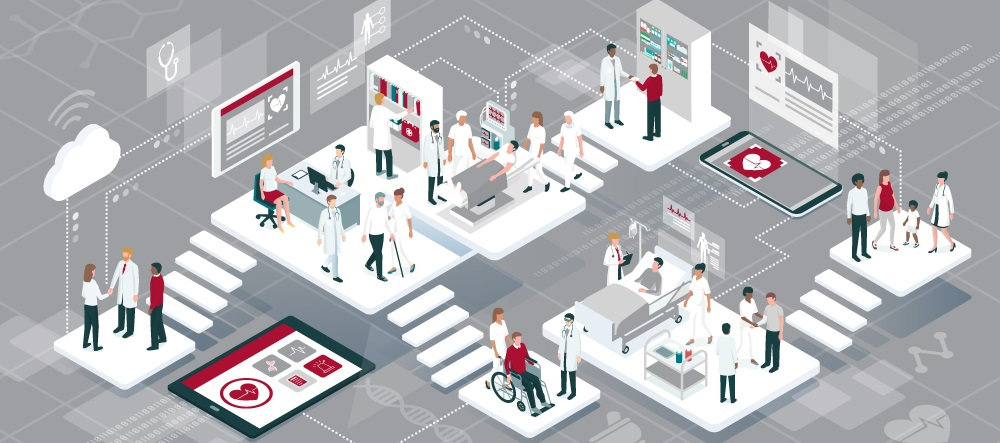Having accurate data and timely insights are key to staying competitive in today’s healthcare industry. As a result, medical facilities and hospitals are increasingly turning to technologies that help them achieve this.

One example is the use of real-time location systems (RTLS), which allow healthcare providers to keep track of assets, staff and patients in real time through tags, receivers, readers and location engine software.
The global RTLS healthcare industry is projected to reach nearly USD 3 billion by 2023. And while survey results have shown that the penetration of RTLS applications is still low in Asia, this technology will become increasingly prevalent in the future.
As the ability to successfully manage key resources and offer premium care in an efficient way will be vital in attracting consumers with ever-rising standards, it is crucial for healthcare providers in Asia to understand the importance, relevance and application of RTLS.
RTLS enhances operational efficiency as it can effectively speed up processes involving hospital assets. The use of radio-frequency identification (RFID) tags on surgical instruments is one example of this. On average, staff spend about an hour counting and sorting instruments before surgery, whilst 20 percent of the time they are unable to find the right instrument.
By attaching secured RFID tags, instruments can be tracked and counted in bulk with the help of a scanner and seamlessly tracked from packaging to use to sterilization. Time is saved, there are less lost instruments and costs are reduced. Additionally, hospitals can show proof of proper sterilization and cleaning of instruments, as this process will have been tracked instrument by instrument via the RFID tag.
Furthermore, the integration of sensors and tags on assets within the emergency department can enhance workflow processes and reduce response times. During critical cases, crash cart and trays need to be located immediately for patients with no delay in time. Asset tracking can help staff locate critical equipment or capture exchanges between equipment within a few seconds.
During their time in a hospital, patients often get shuttled between several departments or move around the hospital by themselves. Sensors and tags providing real-time data on patients can vastly improve their safety and experience.
An example of this is a patient identification system where wristbands worn by patients contain RFID tags to track their movements and ensure that no dangerous areas can be accessed. This is relevant especially for elderly patients and those with conditions like Alzheimer, as they may wander about and get lost in the hospital.
It can also help nurses better identify newborn infants and monitor children who tend to be more mobile during their stay, as well as alert the housekeeping department when a patient has left the room so that it can be cleaned.
Just as patients can be identified and tracked, staff too can wear tags to further improve patient safety. For example, these tags could register whenever a nurse washes his or her hands and remind them to wash them regularly. Furthermore, such tags could integrate with a wider nurse call system and enable patients to call nurses from anywhere on the hospital floor.
A hospital usually has numerous rooms, refrigerators, freezers and warming cabinets to store temperature-sensitive items such as pharmaceuticals, blood, specimens, blankets and food. When temperatures go above or below acceptable levels, this could potentially compromise patient safety and increase hospital expenses.
RTLS can be integrated with sensors that continuously and automatically monitor the temperature without human error and time-consuming manual readings. If the temperature exceeds or drops below a preset threshold or unsafe levels, an alert is transmitted so immediate corrective actions can be taken. This greatly reduces waste and safeguards blood inventory levels. By combining RTLS technology with such environmental monitoring (EM) sensors, the solution not only helps track changes in temperature and humidity, but also senses any “movement” of the object.
One example is when the EM sensor is installed in a cold room and administrators can keep track of when doors are opened to let in warm air and monitor when and by whom. If the EM sensor is installed in the cold box, operators can also detect the movement of the cold box and who is moving it.
DKSH has been working on several RTLS solutions with its customers in Hong Kong; ranging from a temperature and humidity monitoring solution for an international humanitarian service provider’s blood supply laboratory to tracking surgical tools, assets and people in a premium hospital. This is enabling its customers to become more competitive efficient and, more importantly, to offer excellent services to their patients.
In an industry where indecisiveness and inefficiency could lead to the loss of life, having a reliable system based on RTLS technology is critical. If you have any questions on how your organization can benefit from RTLS technology, do share them with me.